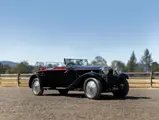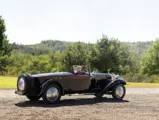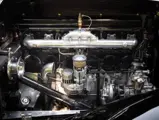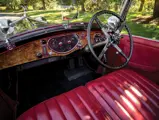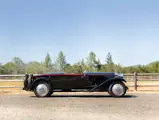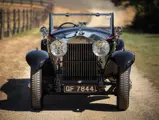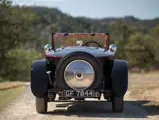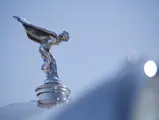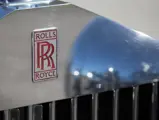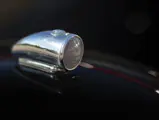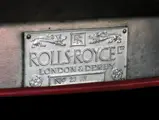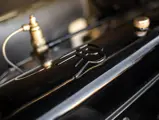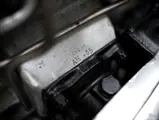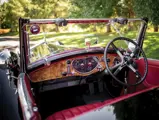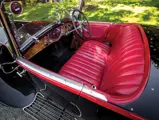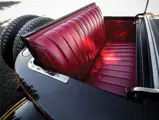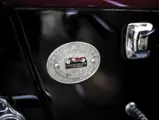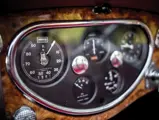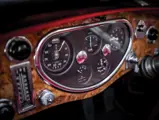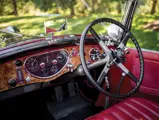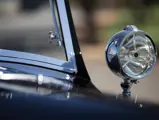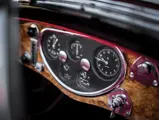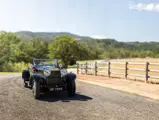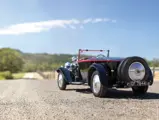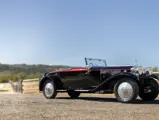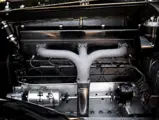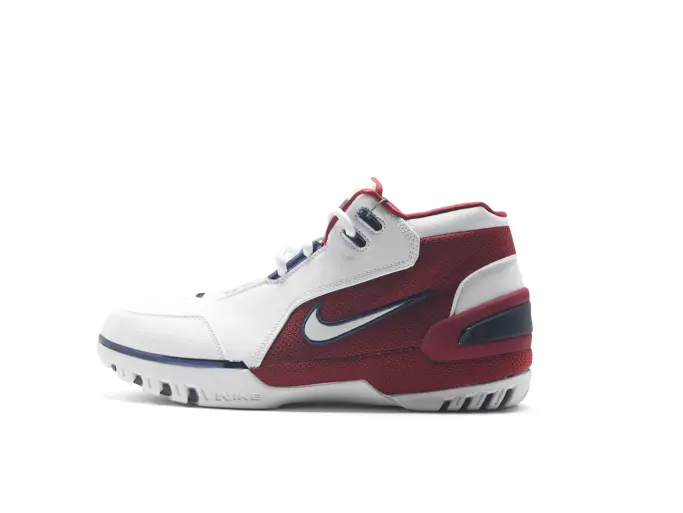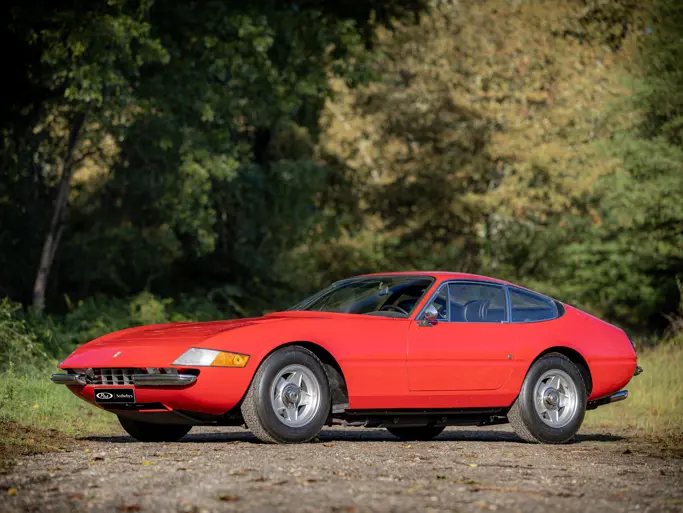Monterey 2015
1930 Rolls-Royce Phantom II Two-Seater Sports by Hooper
{{lr.item.text}}
$800,000 - $1,000,000 USD | Not Sold
 | Monterey, California
| Monterey, California
{{internetCurrentBid}}
{{internetTimeLeft}}

- Bespoke, one-off “boattail speedster” coachwork
- Built for British aristocrat Sir Julien Cahn, 1st Baronet Cahn
- Fascinating ownership with long-term keepers
- Pebble Beach Concours d’Elegance Lucius Beebe Trophy winner
- A uniquely dramatic and truly sporting Phantom II
Est. 160 bhp, 7,668 cc OHV inline six-cylinder engine, four-speed manual transmission with Laycock heavy-duty overdrive, solid front axle with leaf-spring suspension, live rear axle with leaf-spring suspension, and four-wheel servo-assisted drum brakes. Wheelbase: 144 in.
The Rolls-Royce Phantom II was considered an extremely high-quality car and often beautiful at that, but it was seldom known as a sporty car. One of the rare exceptions is chassis number 23GN, ordered to meet the very precise specifications of its original owner.
Sir Julien Cahn, later appointed the 1st Baronet Cahn, was the heir to a British furniture manufacturing business, which he expanded into Jays and Campbell’s, a chain of home décor stores that was very prominent in the UK prior to World War II. He was a well-known philanthropist, responsible for saving the ancestral home of Lord Byron, and as an active first-class right-handed batsman of considerable skill, he was a major figure in British cricket, operating one of the world’s most successful private teams from 1929 to 1939. So passionate about cricket was Sir Julien that he built his own pitch at his palatial home, Stanford Hall, so that he could watch games at home!
This enthusiastic sportsman commissioned his appropriately dashing Phantom II on October 18, 1929. Copies of the original build sheets, which are on file, note that the car was to be delivered to Hooper & Company Ltd., the famous London coachbuilders to royalty, and featured a lowered chassis with numerous special features. The body they built for Sir Julien was a one-of-a-kind design that can be considered a British version of the American “boattail speedster.” It features a cleanly tapered rear deck crowded by two spare tires and an open two-passenger driver’s compartment with no side windows. Nearly hidden was the fact that there was a rear seat under the tapered deck, complete with its own doors and soft-top; there are actually separate hidden soft-tops for both the front and rear seats! As originally built, and as it appears today, the car was not fitted with bumpers, adding to its rakish appearance.
The Rolls-Royce was delivered to Sir Julien in April 1930. He retained it until the late 1930s, when it was donated to support the war effort. When Britain first entered into what became World War II, the UK was woefully short of fighting vehicles, and many wealthy patriots donated their automobiles for staff use by the military. While most donors received their vehicles back at the end of the war, Sir Julien passed away in 1944, which led to his Rolls being sold by the Ministry of War Transport in 1946.
The car made its way into the ownership of H.S.N. Adams, who would own it until 1957, when it passed to R.D. Linford. Mr. Linford maintained the Phantom II for seven years before selling it to John L. Mackinlay. He would enjoy the car for decades and was often seen with it in Rolls-Royce Enthusiasts Club events in the United Kingdom.
In 1988, the Phantom II was purchased by famous British broker Charles Howard, who retained it for three years before selling it to American property developer and collector Ken Behring. It remained in Mr. Behring’s collection until 1997 and then received a comprehensive professional restoration, during which time it was refinished in its present black and scarlet color scheme.
Upon completion, new owner David Hogue displayed the Phantom II at the 1997 Pebble Beach Concours d’Elegance, where it received the Lucius Beebe Memorial Trophy. It eventually achieved Senior status from the Classic Car Club of America in 2003. That same year, it was shown at the Petersen Automotive Museum as part of the famous exhibit celebrating Rolls-Royce’s centenary. The convertible tops were then replaced in 2004, proper all-leather spring gaiters were fitted by Rolls-Royce’s original supplier, and a Laycock heavy-duty overdrive was fitted. In 2005, the car participated in the first Pebble Beach Motoring Classic, completing the 1,500-mile tour without incident and appearing in Road & Track magazine’s coverage of the event in their December 2005 issue.
After several years in a private West Coast collection, the Phantom II was purchased by its present owner, who has maintained it alongside some of the finest Rolls-Royces and Bentleys in the world. The car has been fitted with proper Lucas P100 headlamps, and a correct Phantom II tool kit is housed within the tail and accompanies the car, along with receipts for a mechanical restoration performed by well-known UK restorer Graham Moss, done in the current ownership, and aforementioned records from the Rolls-Royce Enthusiasts Club and the Rolls-Royce Foundation. The car is also pictured in Lawrence Dalton’s Coachwork on Rolls-Royce (page 128) and Charles Howard’s An AUTOBiography (page 194).
Few Phantom IIs are as special and exciting as this unique and sporty car, built for a uniquely sporty gentleman.

